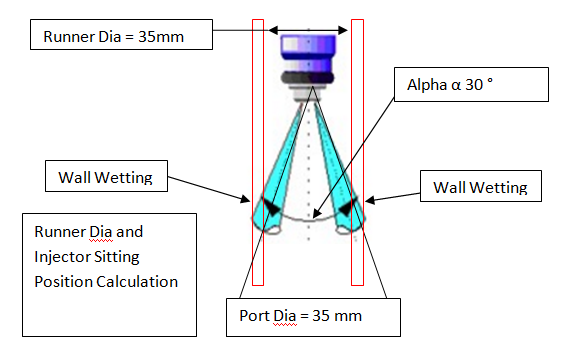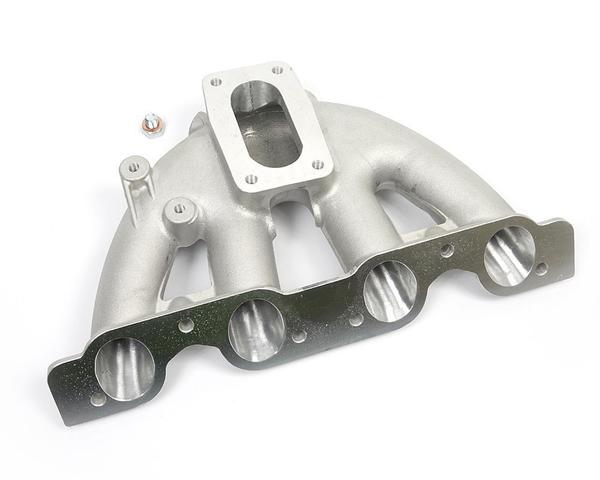Exhaust System Design Review and Design Failure Mode Effct Analysis
Please read previous blogs for exhaust layout, material selection, manufacturing consideration and related subjects. Here in this blog we will discuss design review and design failure mode effect analysis. To understand RPN Number and its calculation please read my blog of throttle body DFMEA or Intake Manifold DFMEA.
Design Review of Exhaust System -
Child
Part
|
Requirement
|
Material
|
Manufacturing
|
Cost
|
Weight
|
Life
|
Design
Review
|
Exhaust Manifold
|
Burst Pressure 40 Bar,
Vibration 30 g,
Working Temperature
1000 ° C,
Surface Roughness Ra8
|
Aluminum
|
PDC, Machining
|
A
|
B
|
A
|
Exhaust Manifold with catalyst
will be parched and welding will be done on steel pipe to regulated pipe
length if required.
|
Steel
|
Machining
|
B
|
B
|
A
|
|||
Gasket
|
Working Temperature 1000 °
C, Leakage Pressure 30Bar
|
Steel
|
Machining
|
A
|
/
|
C
|
If no change is done in exhaust
pipe then same gasket from Yamaha R6 will be used. Otherwise same R6 gasket
will be machined to adjust shape for exhaust.
|
Alloy
Steel
|
Machining
|
C
|
/
|
A
|
|||
Catalyst
|
As per 2016 Emission Rule in UK
|
Currently Fitted
|
OEM
Knowhow
|
A
|
C
|
B
|
New R6 catalyst can be used as
per latest emission regulation 2016.
As currently fitted catalyst is
old it can cause back pressure or breach emission regulation however after
performance test old part can also be used.
|
New R6 2016
|
C
|
A
|
A
|
||||
Fastener
|
Temp 1000 °C
30 G Vibration
100 N Load
No Rust
|
M8 Class8.8
|
Casting
Heat Treatment
Thread Making
|
-
|
-
|
-
|
As temperature, Vibration and
Chemical Reaction are high; it is suggest to use M10 Bolts.
|
M8 Class10.9
|
-
|
-
|
-
|
||||
M10 Class8.8
|
-
|
-
|
-
|
DFMEA - Design Failure Mode Effect Analysis is mandatory and day to day work of an automotive engineer in design department. No safety related part can be and must be designed with out DFMEA. Severity is threat, Occurrence is probability of happen this failure and detection is can quality circile tools can catch it.
For example softness of driver seat - Suppose softness of driver seat is out of specification. Severity is 1 as there is no threat to life of driver or legal issue to OEM. Occurrence is how often this happen - this data you can get from quality department or vendor development department. May be in 10000 seats, 1 seat is out of specification- so 2 or 3 rating is ok. Detection - Can quality engineer check it on manufacturing line or can final inspection engineer at OEM check it, catch it and reject it - of course yes so score will be very less.
On the other hand fuel tank or brake fail is life threat so severity is 10. Occurrence is high because fuel system has hundreds of parts and any part malfunction can lead to leak. Detection is difficult as many tests are destructive test and sampling is done. For example rubber hose near fuel rail. if every component is check for worst case pressure - the hose will burst - it is called burst testing so out of 1000 hose only 1 is checked.
If you need more understanding about DFMEA, please read throttle dfmea and intake manifold dfmea.
Function
|
Failure Mode
|
Failure Effect
|
SEVERITY
|
Potential Cause
|
OCCURANCE
|
Design Process
|
DETECTION
|
RPN
|
|
Prevention
|
Testing
|
||||||||
Exhaust
Manifold
|
Interference in gas
|
Low Volumetric Efficiency
High Exhaust Noise
Emission Rule Violation
|
7
|
Wrong Exhaust Pipe Length,
Wrong Catalyst selection
|
9
|
Pipe
Length Simulation, Manifold Simulation.
Burst Pressure Simulation
|
Emission Test, Exhaust Noise Test,
Engine Durability Test
|
3
|
7*9*3=
189 |
Back Flow
|
|||||||||
Flow Chocking
|
|||||||||
Leakage
|
|||||||||
Catalyst Melting
|
|||||||||
Muffler
Silencer
|
Pressure Wave
|
Abrupt Torque Change,
High Exhaust Noise,
Emission Rule Violation
|
8
|
Wrong Muffler Shape
Wrong Tail Pipe Length
|
5
|
Noise Simulation,
Pressure Wave Simulation
|
Exhaust Noise Test,
Engine Durability Test
|
4
|
8*5*4
=160
|
Low scavenging
Efficiency
|
|||||||||
No Noise Reduction
|
|||||||||
Leakage, Melting or Braking
|
|||||||||
Gasket
|
Leakage
|
Accident
|
10
|
Wrong thickness
Wrong Mounting Hole Dia and Tolerances
Wrong Material
|
2
|
Stress and Strain CFD, Thermal Stress Simulation
|
Engine Dyno Test
|
2
|
10*2*2=40
|
Burn
|
|||||||||
Assembly
|
Air Leakage
|
High Noise and Emission regulation Violation
|
8
|
Wrong Tolerance, Wrong Material,
Shrinkage due to Thermal Expansion
|
2
|
GDNT and Tolerance Stack up Analysis
|
Engine Durability
Test
|
2
|
8*2*2=32
|
Bolt Hole Mismatch
|
|||||||||
Fatigue and Crack
|
|||||||||
Suggestion based on DFMEA of Exhaust System :-
Function
|
Failure
Mode
|
Recommended
Action
|
|
Exhaust Manifold
|
Interference in gas
|
421 Type Exhaust Pipe to
avoid gas interference.
Use new R6 Catalyst. Manifold
Outlet Dia should be nearly double that single inlet pipe.
|
|
Back Flow
|
|||
Flow Chocking
|
|||
Leakage
|
|||
Catalyst Melting
|
|||
Muffler Silencer
|
Pressure Wave
|
Use simple perforated
type muffler from available range from Yamaha for Bikes rather
manufacturing.
|
|
Low scavenging Efficiency
|
|||
No Noise Reduction
|
|||
Leakage, Melting or
Braking
|
|||
Gasket
|
Leakage
|
Use Metal Gasket with
high surface finish. Have Minimum Hole and Position Tolerance.
|
|
Burn
|
|||
Assembly
|
Air Leakage
|
Keep gasket hole bigger
than hole in Manifold. Also Gasket Hole can be made Oval to move and fix
it.
|
|
Bolt Hole Mismatch
|
|||
Fatigue and Crack
|







